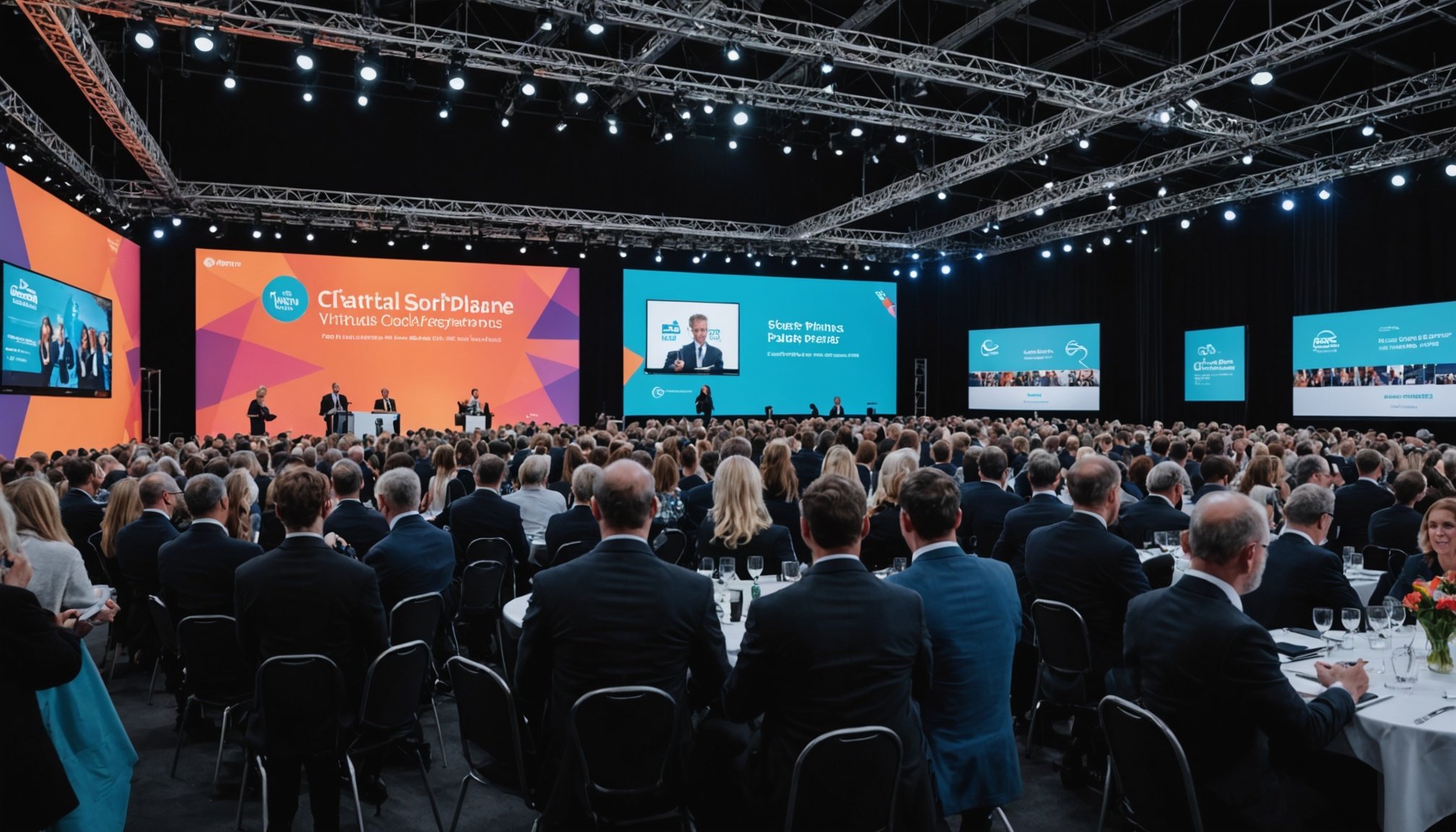Understanding Virtual and Hybrid Event Formats
In the evolving landscape of event planning, recognizing the differences and applications of various virtual event types is crucial. Virtual events, ranging from webinars to fully immersive 3D experiences, provide flexibility and accessibility. The Key characteristics that distinguish hybrid events lie in their blending of live and digital audiences, often requiring hybrid venues equipped to support both. Event planners must consider different technological needs and logistical setups.
Adopting both virtual and hybrid formats offers significant benefits in the UK event landscape. Hybrid events, for instance, extend audience reach by allowing physical attendance complemented by an online component. They offer wider networking opportunities and increase flexibility for attendees. A key advantage is the potential for increased attendance; people who might not travel can still participate. Virtual events reduce costs associated with venue hire and travel, appealing to budget-conscious planners. This diverse format usage is not just a trend but a strategic shift towards inclusivity and sustainability. The integration of these formats paves the way for event innovation in the UK, meeting the demands of modern attendees while maximizing impact.
Additional reading : Unleashing Potential: Innovative Crowdsourcing Strategies for UK Non-Profits to Elevate Community Fundraising Success
Essential Technology Tools for Event Success
Navigating the sea of event technology is crucial for hosting effective virtual and hybrid events. In the UK, planners often turn to streaming platforms such as Zoom, Microsoft Teams, and Hopin. These platforms provide robust features, including high-definition streaming and real-time analytics, essential for managing both audience interaction and content delivery. Selecting the right platform can be pivotal; while Zoom offers user-friendly features, Hopin focuses on customisable virtual environments.
Beyond streaming platforms, there’s a myriad of interactive tools designed to enhance engagement. Tools like Slido and Mentimeter enable live polls and Q&A sessions, making virtual and hybrid audiences feel more involved. Incorporating these tools can transform passive viewership into active participation, a key to event success.
When selecting technology, consider the specific needs of your event type. A webinar might require different interactive elements compared to a hybrid conference. Prioritise technologies that not only facilitate smooth transitions between streaming and interaction but also affirm data privacy, given the importance of protecting attendees’ information. Ultimately, aligning technological tools with event goals is essential for maximising audience engagement and meeting dynamic expectations.
Audience Engagement Strategies
Effectively engaging an audience involves a blend of innovative techniques and strategic interaction to sustain attendees’ interest. Real-time engagement techniques like live polls and Q&A sessions can significantly boost audience interaction. By actively soliciting feedback and questions during events, participants feel involved, which helps create a more dynamic and engaging experience. Many streaming platforms facilitate these features, providing seamless integration of audience engagement.
Innovative Engagement Techniques
Incorporating creative elements like gamification enhances participation levels. Elements such as quizzes and contests can invigorate both virtual and hybrid events. This playful approach encourages active involvement by rewarding participants, fostering a sense of achievement and collaboration. Such strategies are crucial in maintaining high energy and involvement throughout an event.
Role of Gamification
Gamification elements transform passive audiences into active participants. By gamifying elements of the event, such as accumulating points for participation or offering prizes for engagement, organisers can make events more compelling and interactive. This approach is a game changer, making sessions more memorable and providing networking opportunities, as game dynamics often foster connections.
Leveraging Social Media
Social media is a powerful tool for extending engagement beyond the event itself. Platforms like Twitter and Instagram allow for live event commentary, creating broader networking opportunities. By using hashtags and encouraging posts, organisers can stimulate interaction and draw worldwide audience participation, enhancing the event’s reach and impact.
Logistical Considerations for Planning
Efficient planning is crucial to the success of hybrid events, where event logistics play a pivotal role in ensuring smooth execution. One must begin with a comprehensive planning checklist, tailored to the event’s specific requirements. This checklist typically includes venue selection, technology setup, and coordination of both physical and online elements. Hybrid event management demands meticulous planning to integrate seamlessly in-person and digital components.
Checklist of Vital Logistical Elements
- Select hybrid venues that support advanced audiovisual setups.
- Ensure stable and high-speed internet connectivity for uninterrupted streaming.
- Design a user-friendly virtual platform facilitating audience interaction.
Best Practices for Coordination
In hybrid settings, coordination between live and virtual audiences can pose challenges. Prioritizing technical support is crucial, ensuring teams are on standby to handle any issues promptly. Troubleshooting plans should be established to address potential technology glitches swiftly.
Lastly, consistently engaging event logistics professionals and incorporating feedback from previous events can elevate the planning process. By understanding the multifaceted nature of hybrid events, planners can create memorable experiences that effectively combine the richness of in-person and virtual participation.
Case Studies: Successful UK Hybrid Events
Exploring successful hybrid event examples provides valuable insights into effective planning and execution. Here are two noteworthy event success stories that demonstrate best practices in the UK.
Highlighted Case Study 1
A pioneering tech conference in London seamlessly integrated hybrid features, utilising advanced technology to bridge virtual and physical attendees. The conference excelled by incorporating interactive elements such as live polls and networking opportunities, which enriched participant engagement. Key to its success was the strategic use of hybrid venues with robust technology infrastructure, vital for managing simultaneous online and offline components.
Highlighted Case Study 2
An acclaimed music festival adopted a hybrid format, attracting audiences nationwide. By offering both live performances and virtual streaming, it maximised reach and accessibility. Advanced streaming platforms delivered high-quality live feeds, ensuring a visually captivating experience. Emphasising event logistics, organisers coordinated varied activities effectively, blending real-time interaction with creative virtual spaces.
Emerging Trends in Hybrid Events
The UK event industry is embracing creative event format benefits, such as integrating augmented reality to enhance audience immersion. Increasingly, organisers are adopting sustainable practices and leveraging data analytics to tailor experiences, ensuring hybrid event success continues to grow within the UK’s dynamic event landscape.







